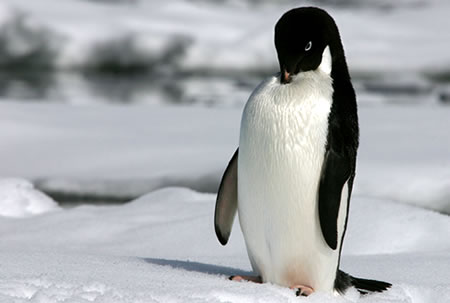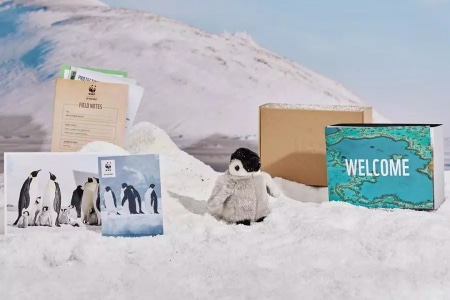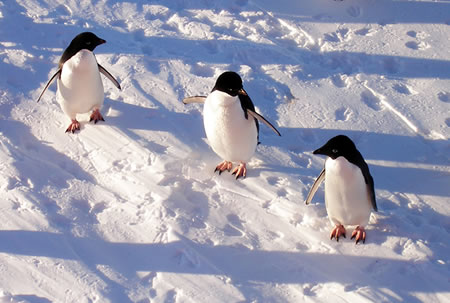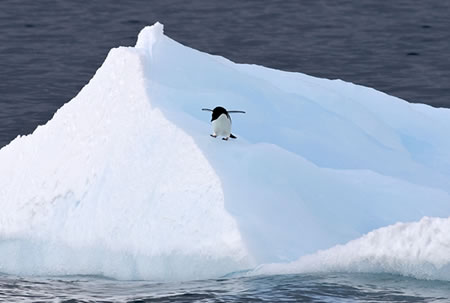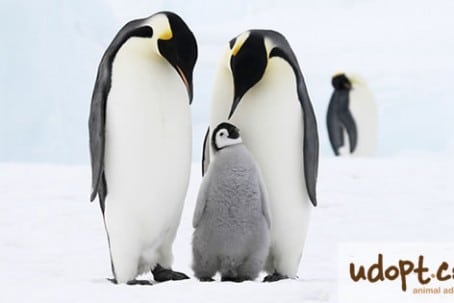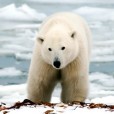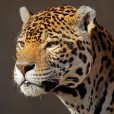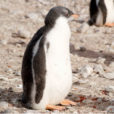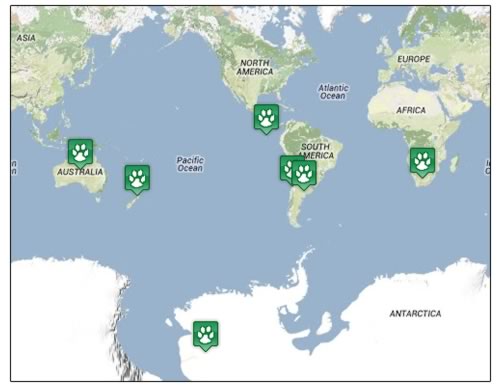Adopt a penguin and receive
- A cuddly toy of your penguin just like Monty!
- A factbook all about the Adélie penguin along with bookmarks and stickers too.
- A certificate to frame your commitment to the WWF (printed on recycled paper).
- Two exclusive magazines: WWF’s ‘Wild World’ and ‘My Penguin’ with news and updates for your adopted animal.
udopt'r choice
Penguins are really social animal that loves to be around friends and family all the time, sometimes in groups of 200,00! They are always looking for that special someone in their life, and when they find them, they stay together for life. Penguins believe in sexual equality, and the men love to play househusband. They will incubate the eggs whilst their wife is off looking for food.
udopt it because
- It is predicted there will be a 30% reduction in the number of Adélie penguins by 2070.
- Your donation will help WWF to stop illegal fishing in the area and help build marine protected areas in the Antarctic to stop the decline in penguin numbers.
- A cuddly toy makes this an ideal gift for children
- It’s great as a last-minute gift as the gift certificate can be printed or emailed immediately following payment.
- Adoption programmes start from as little as £3.00 a month.
>> Adopt a Penguin Today
Adopt a Penguin Gallery
WWF Adopt an Animal Information
Since 1961 WWF have been advocating and giving a voice to the animal kingdom. Recognised for their work internationally udopt is proud to feature WWF animal adoptions programmes. Adopt and you will receive a gift pack including a cuddly toy (or a personalised book with a Tiger adoption), a certificate plus lots more. You'll also get regular updates throughout the year.
https://wwf.org.uk/UK Registered Charity Number 1081247
Delivery information
By Post :
FREE Delivery Your gift pack will be delivered within the UK FREE of charge. Your package will be sent out within 2 business days, but please allow up to 5 days for delivery.
Last Minute Gift? :
Left it until the last minute? The good news is you can still receive a gift certificate to print or email up to the big day! You will then receive the gift pack within 10 days of ordering!
Did you know?
- Penguin’s used to be able to fly millions of years ago, but now they specialise in swimming and diving. They are fastest swimmers and deepest divers of any bird on the planet.
- A penguins eyesight is far better underwater than it is on land, which is helpful when they go diving for food.
- They spend at least 75% of their life at sea, and can live up to 30 years old.
- They don’t drink water, but they love to eat snow, which is good as there is plenty of that around where they live!
- The Adélie is the smallest of the Antarctic penguins, but their babies grow the fastest.
Our Adélie penguin Says…
I may be as cute as a button and lots of fun to watch as I race around and slide on my belly, but my numbers are dropping at a rapid rate. Our number has decreased massively due to global warming and illegal fishing, so I need your help to survive. Please sponsor me today to help WWF protect my habitat and reduce the numbers of fisherman that come into my home. We might only be small but we need somewhere to live and play too, and if you could help that would be very welcome.


